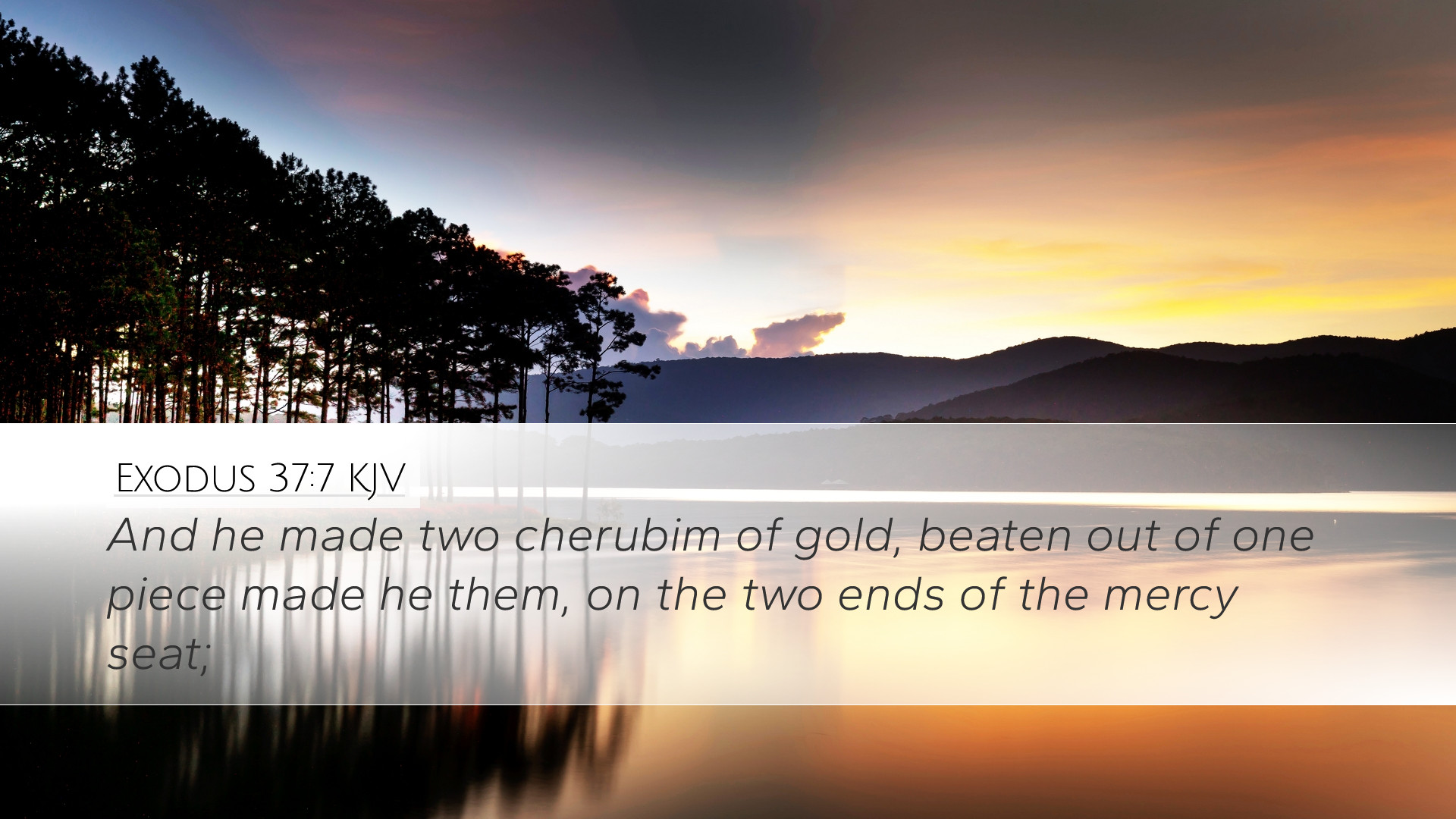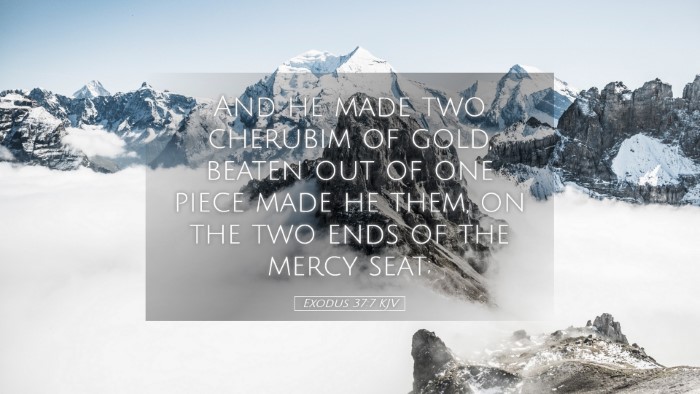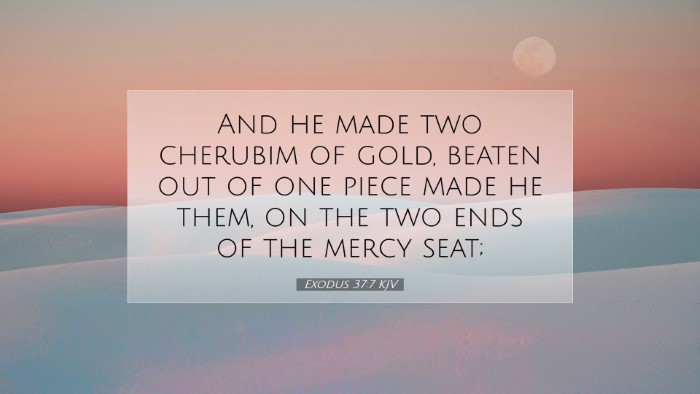Exodus 37:7 - Commentary and Insights
"And he made two cherubim of gold; beaten out of one piece made he them, on the two ends of the mercy seat." - Exodus 37:7 (KJV)
Introduction
This verse forms part of the intricate description of the furnishings of the Tabernacle, emphasizing the significance of the cherubim in the context of God's presence among His people. The construction details highlight both the artistry involved and the theological implications of the cherubim symbolic role.
The Cherubim: Symbolism and Significance
According to Matthew Henry, the cherubim symbolize the glory and holiness of God. Positioned on the mercy seat, the cherubim are an emblem of divine protection and guardianship over the Ark of the Covenant. They represent the duality of God's nature—His immanence and transcendence.
Albert Barnes elaborates on the nature of these beings, noting that cherubim are often seen as mediators between God and humanity. Their presence in the Holy of Holies underscores the seriousness of accessing God's presence and the sanctity required to approach Him.
Adam Clarke emphasizes the artistic value of the cherubim's craftsmanship. The detail of being "beaten out of one piece" reflects not only the skill of the artisans but also symbolizes the unity and indivisibility of God's covenant with His people. The imagery suggests a deep connection between divine mercy and judgment, as the cherubim faced each other, forming a bridge between God's holiness and His grace.
The Mercy Seat: A Place of Atonement
The mercy seat itself, where the cherubim are positioned, is significant in its function within the Israelite worship system. Matthew Henry notes that the mercy seat serves as a throne for God’s presence, where He would meet with Moses and commune with the people through the high priest. This meeting ground serves as a critical foundation for understanding the nature of atonement.
Albert Barnes points out that the mercy seat is an essential component of the sacrificial system of Israel. It is here that the blood of the sacrifices would be sprinkled, symbolizing the covering of sin and the path to reconciliation. The interplay between the mercy seat and the cherubim vividly illustrates the themes of justice and mercy within God's relationship with humanity.
Artistic Craftsmanship and Theological Implications
The verse highlights the meticulous detail in the creation of the cherubim, reflecting a deeper theological truth. Adam Clarke asserts that the cherubim's design, being "beaten out of one piece," portrays the perfection of Christ, who is the ultimate mediator that bridges the gap between sinful man and a holy God.
Matthew Henry further emphasizes that the construction demonstrates God's command for excellence in worship and the offering of our gifts. Every detail in the construction of the Tabernacle and its furnishings is a reminder that God desires our best in devotion to Him.
Ecclesiastical and Ethical Reflections
Pastors and theologians may reflect on how this verse shapes our understanding of the church's mission and the nature of worship. The presence of the cherubim on the mercy seat suggests that worship must be undergirded by both reverence and love, acknowledging God’s holiness while embracing His mercy.
Albert Barnes emphasizes the balance of worship that is sensitive to both God’s justice and His grace, and that a church community should reflect these values. This balance is crucial in preaching and teaching, directing congregants toward both personal holiness and the overwhelming grace provided through Jesus Christ.
Conclusion
Exodus 37:7 encapsulates rich theological, artistic, and worshipful dimensions that remain pertinent in contemporary Christian thought. As an emblem of God’s presence, the cherubim remind us of the serious nature of divine engagement and the transformative power of God’s mercy. The insights drawn from the public domain commentaries invite pastors, students, and scholars to delve deeper into the profound mysteries of God's Word, fostering a greater understanding of His character and our response in worship.


